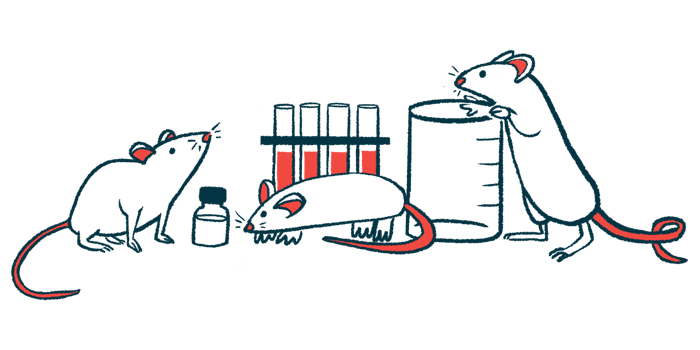Aruna Bio’s AB126 eased inflammation in ALS mouse model
Therapy also reduced levels of NfL, a biomarker of nerve cell damage

Aruna Bio‘s investigational therapy AB126 significantly eased inflammation in the spinal cord and extended survival in a mouse model of amyotrophic lateral sclerosis (ALS), the company announced.
The therapy, which is expected to treat several other neurodegenerative and neuroinflammatory disorders, also significantly reduced the levels of neurofilament light chain (NfL), a biomarker of nerve cell damage.
“We are encouraged by our growing dataset demonstrating the potential of AB126 in its native form to address both acute and chronic neurological indications, including ALS,” Stephen From, CEO at Aruna Bio, said in a company press release. “We look forward to building upon this pilot data and further exploring the therapeutic potential of AB126 for the treatment of ALS and expanding our AB126 platform to chronic [central nervous system] indications.”
ALS is caused by the progressive loss of motor neurons, the nerve cells that control voluntary movements, leading to the loss of the ability to control muscle movements. Inflammation in the brain and spinal cord is common with ALS and may contribute to the disease’s progression by aggravating cell death.
What is AB126?
AB126 is an experimental therapy made of exosomes — small packets released by virtually all cells that contain proteins and other molecules important for cellular communication. Exosomes can transport cargo, such as therapeutic agents, to cells of interest, but most exosome-based therapies developed to date lack specificity to the nervous system.
The exosomes in AB126 are derived from neural stem cells and contain specific proteins at their surface that are crucial to cross the blood-brain barrier (BBB), a semi-permeable layer that regulates the entry of molecules from the blood into the brain. Crossing this barrier is often a challenge when developing therapies for neurological diseases.
Preclinical research has shown that AB126 can cross the BBB and accumulate in brain regions involved in motor movement, cognition, and procedural learning, which involves repeating a task until the activity doesn’t require conscious awareness, essential for developing motor and cognitive skills.
Once in those regions, the therapy should bring down inflammation by reducing levels of pro-inflammatory immune cells while increasing the anti-inflammatory ones and promote nerve cell protection by reducing oxidative stress — a type of cell damage — and stimulating nerve cell survival. It’s also designed to boost the proliferation of nerve stem cells to increase nerve cell growth and repair.
Researchers have tested the exosome-based therapy in a mouse model of ALS carrying mutations in the SOD1 gene — associated with up to 20% of familial ALS cases and up to 2% of sporadic cases. The findings suggest the treatment is working as intended, reducing inflammation and markers of nerve damage, and leading to an increase in the mice’s survival.
“In the current pilot study, we observed prolonged survival in AB126 treated mice due to significantly reduced inflammatory mediators in the spinal cord, as well as significant reductions in serum neurofilament light chain, an important biomarker of neurodegeneration,” From said.
The therapy can treat a range of neurodegenerative conditions with significant unmet medical needs, according to the company. The neural exosome platform can also serve as a system to deliver other therapeutic molecules into the brain.







